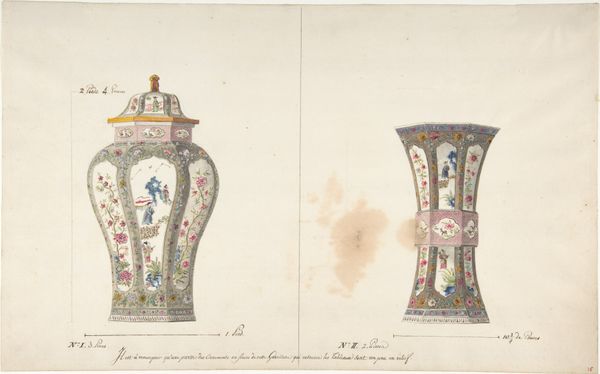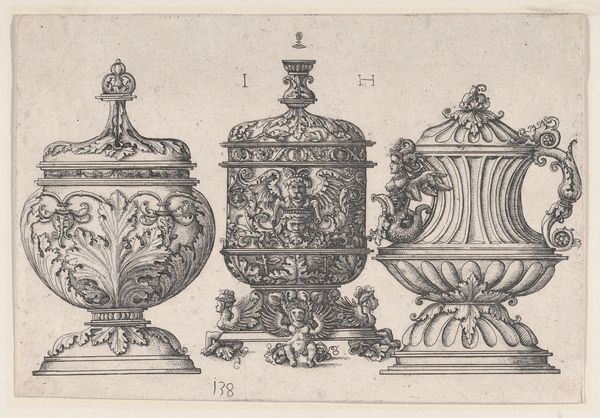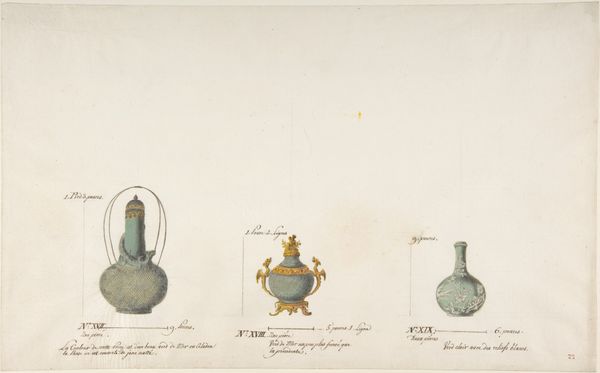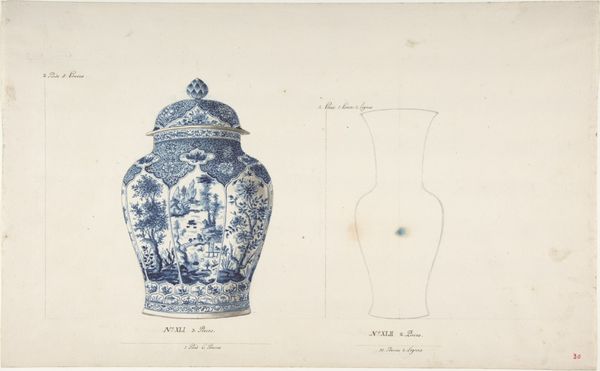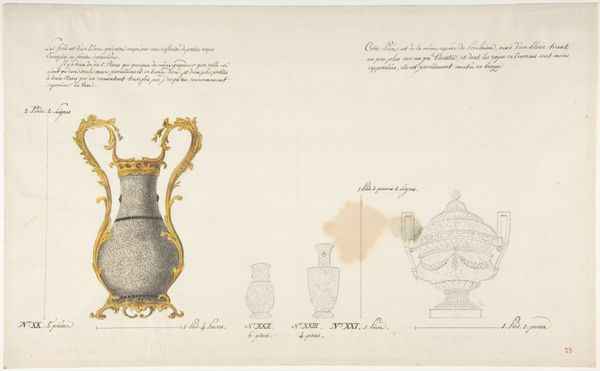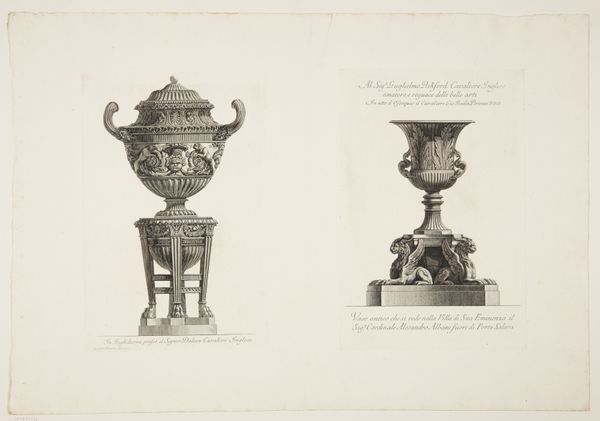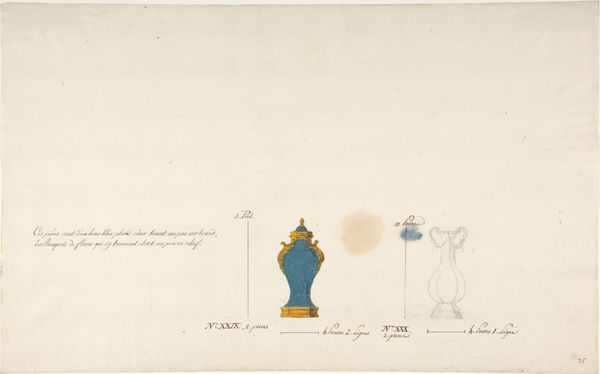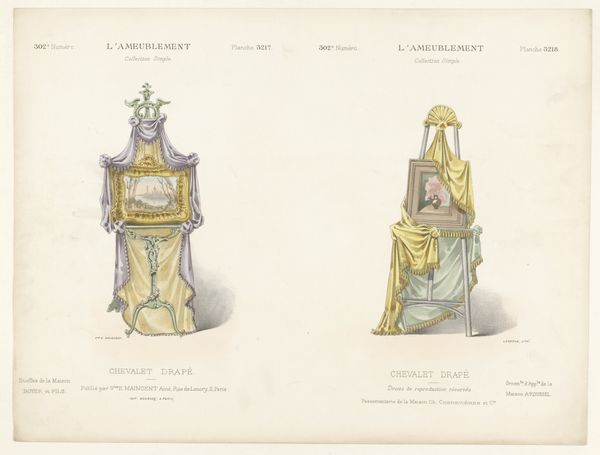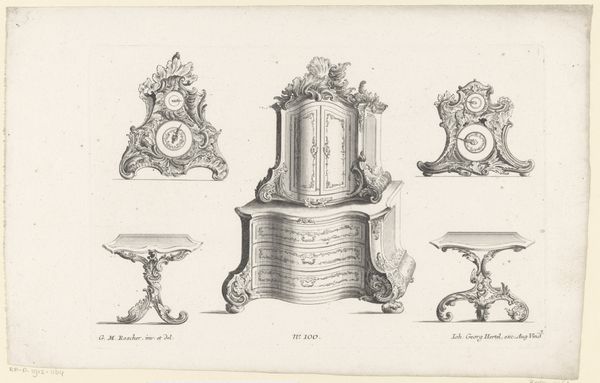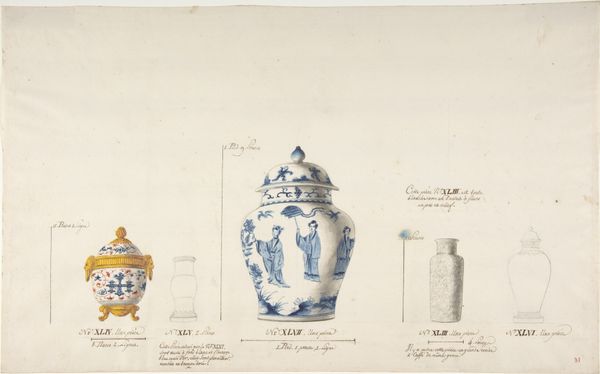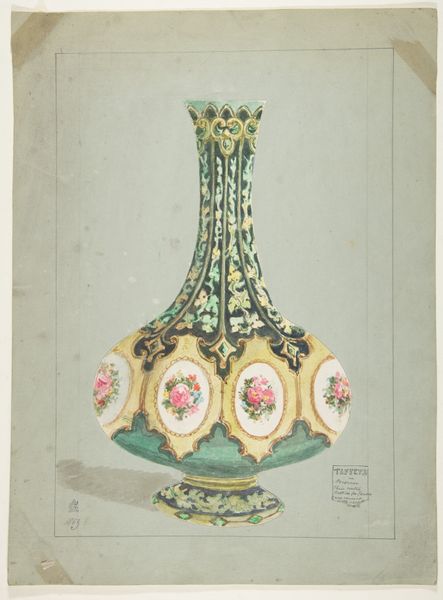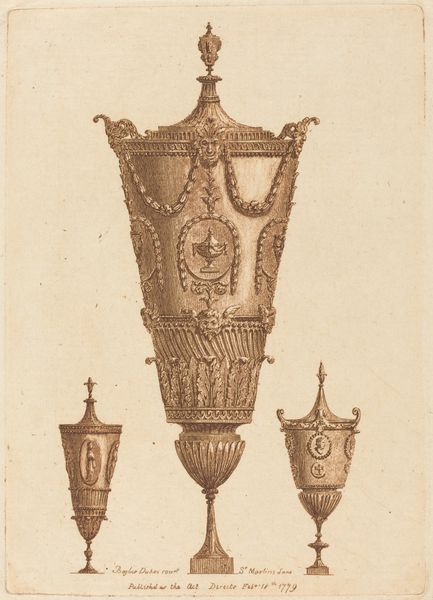
Dimensions: 14 15/16 x 9 3/16 in. (37.9 x 23.3 cm)
Copyright: Public Domain
Curator: This drawing, titled "Design for Three Vases," dates to between 1765 and 1790 and is currently held in the collection of the Metropolitan Museum of Art. It's attributed to an anonymous artist. What's your initial reaction? Editor: My first thought is of elaborate staging! The way the gold leaf seems to both restrain and enhance these glazed ceramic forms evokes a conversation around power and prestige, don’t you think? Curator: Absolutely. The Rococo style here speaks to that—a very self-aware performativity in aristocratic culture. Consider the materials. The watercolor and intaglio work highlights how objects, especially in the decorative arts, mirrored societal values regarding beauty and excess during this era. What stories do you think they were designed to tell? Editor: It's interesting you frame them as storytelling objects. Given that ceramic production was hardly a straightforward endeavor in the late 18th century, with its heavy reliance on skilled labor, do you see these objects as bearing the marks of that labor too? Curator: I think so. Though the artist is anonymous and that makes reading into intention hard, these weren't merely functional items. Their intended use, and who had access to them, reflect rigid class divisions and the exploitation inherent in creating luxury goods, particularly impacting women and other marginalized workers, correct? The very making and displaying of such items asserted social dominance. Editor: Exactly. The form follows this, too. It’s that careful choreography between opulence and restraint – all held together by those metallic flourishes. We have to consider labor when understanding the history. Curator: Agreed, focusing too much on surface-level aesthetics obscures that story. Ultimately, the social history, and its connection to objects that both masked and benefited from it, demands a full-fledged analysis, connecting history, class and labor! Editor: I think seeing art through the prism of production helps to keep the bigger story afloat and foreground the lived experiences behind supposedly untouchable, exquisite artifacts like these vases.
Comments
No comments
Be the first to comment and join the conversation on the ultimate creative platform.

